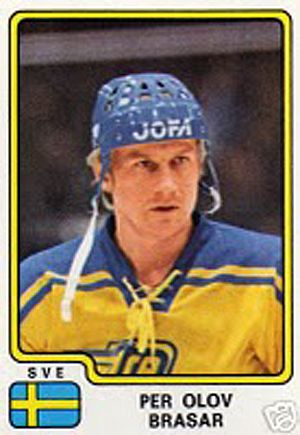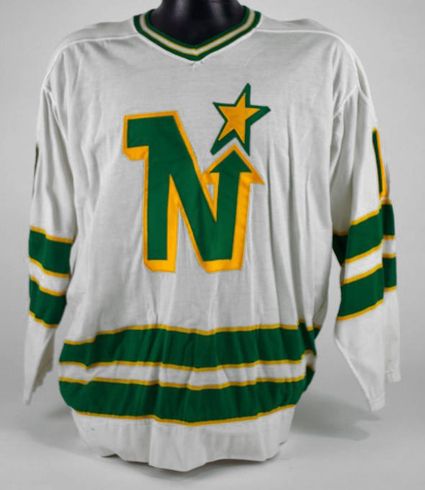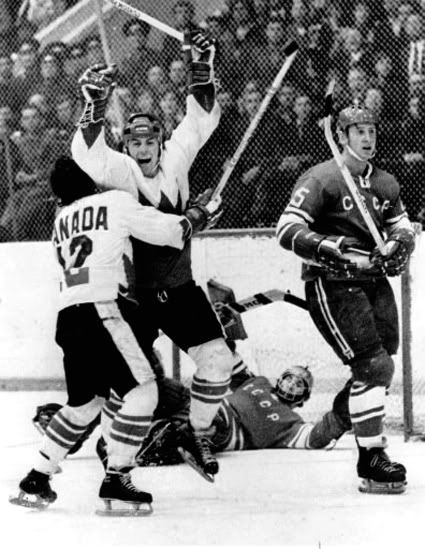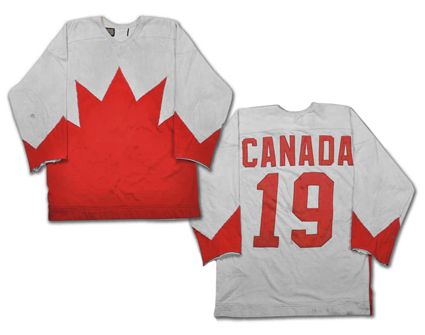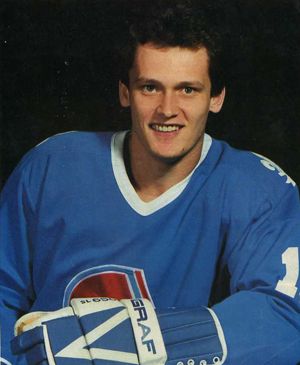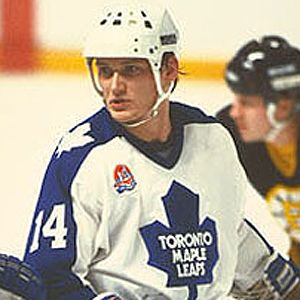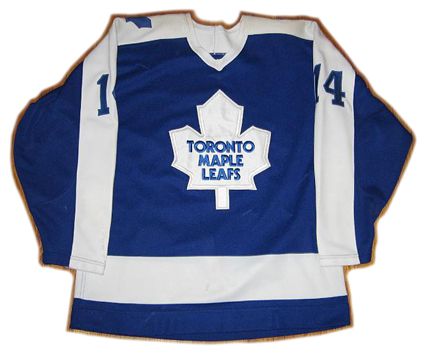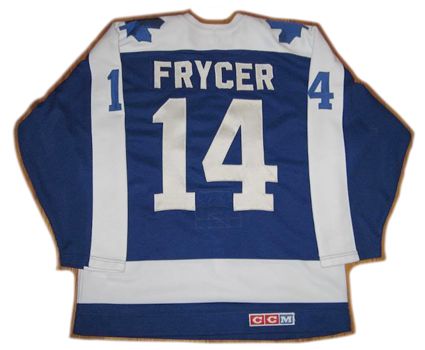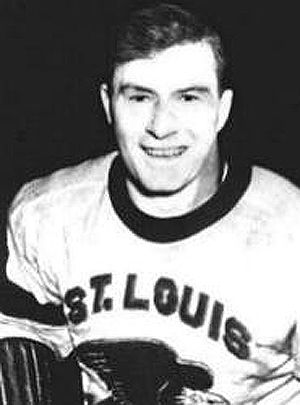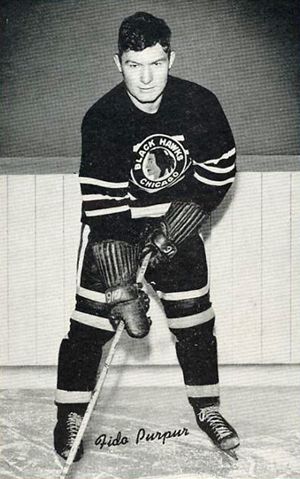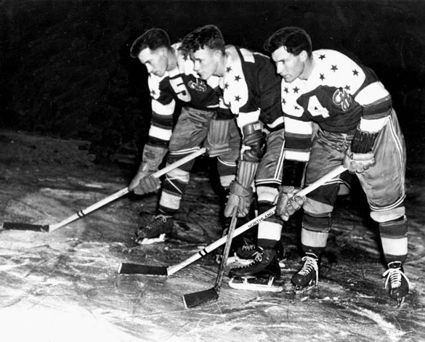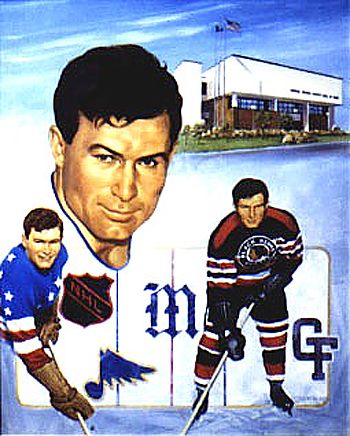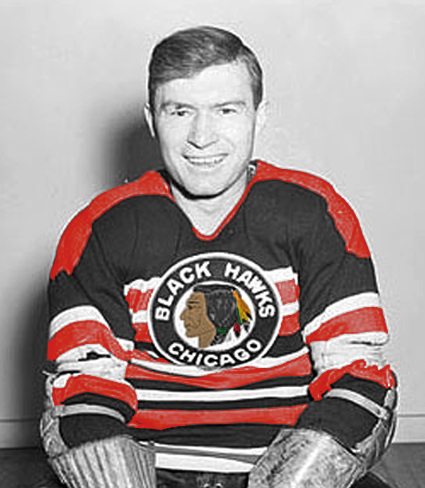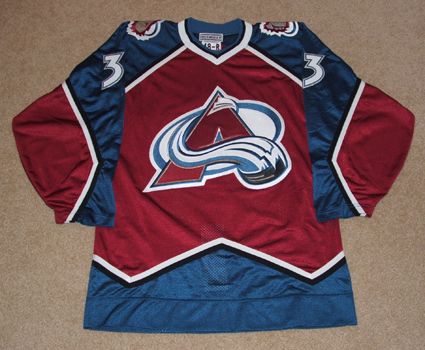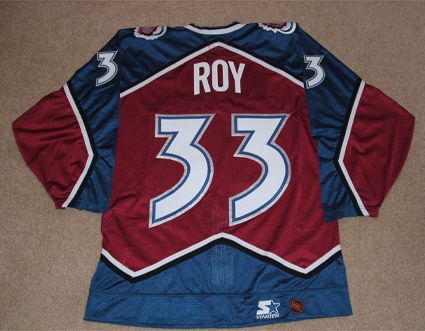Saturday, October 1, 2011
Announcing the Third String Goalie Hockey League
We are pleased to announce the Third String Goalie Hockey League!
Up to 11 readers of this site can join our head-to-head fantasy hockey league on Yahoo! Sports for a fun season of competition. The live draft is scheduled for Wednesday, October 5th at 8 PM Central time, but you do not need to be present to participate, as your players can be chosen automatically for you based on the pre-rankings which you can edit ahead of time based on your personal preferences.
All we ask in this fun league is that you remain an active and participating member throughout the season if you choose to participate.
There are several ways to join the TSGHL, including our posted invitations on the ubiquitous twitter and facebook.
For those concerned, the league rosters consist of 3 Centers, Left Wings and Right Wings, 4 Defensemen, 2 Goaltenders, 4 bench spots and 4 Injured Reserve spots.
Scoring categories consist of Goals, Assists, Plus/Minus, Penalty Minutes and Powerplay Points while the goaltending categories are Wins, Goals Against Average, Save Percentage and Shutouts.
If this sounds fun to you we hope you will consider joining us!
Labels:
Fantasy Hockey
Friday, September 30, 2011
1977 Sweden National Team Per-Olov Brasar Jersey
Born on this date in Falun, Sweden Per-Olov Brasar began his professional career with Leksands IF in Sweden's Elitserien in 1969-70 and proved to be a clutch performer in the playoffs, scoring 14 points in 14 games in both 1971 and again in 1973 when Leksands won the league championship.
1974 saw Brasar make his national team debut which saw his first appearance in the World Championships with 9 points in 9 games on his way to a bronze medal. He would make further appearances for Sweden at the Worlds in 1975 (bronze), 1976 (bronze), 1977 (with 11 points in 10 games on his way to a silver medal) and a final one in 1978 as well as being named to Sweden's lineup for the inaugural Canada Cup in 1976.
1974-75 saw Leksands win a second championship following Brasar's best European season with 42 points in just 30 games.
After two more seasons, which included another 40 point campaign in 1976-77, Brasar made the move to North America, signing as a free agent with the Minnesota North Stars of the NHL, where the longer season allowed Brasar to set a new career best with 57 points while registering a 20 goal season while playing with fellow Swedes Roland Eriksson and Kent-Erik Andersson.
Eriksson, Brasar and Andersson teamed up with the North Stars
After a second full season in Minnesota, he was dealt to the Vancouver Canucks 22 games into the 1979-80 season. After having just scored 16 goals in two seasons, the change did Brasar good as he set career highs in all offensive categories with 22 goals, 41 assists and 63 points.
One final NHL season followed in 1981-82, which included a trip to the Stanley Cup finals, before Brasar returned to Leksands in 1982-83. He then played his final season with Mora IK in the second division before retiring as a player.
His final NHL totals were 64 goals and 206 points in 348 games.
Today's featured jersey is a 1977 Sweden National Team Per-Olov Brasar jersey as worn when Brasar won a silver medal with Sweden at the World Championships in Austria.
In the late 1970's Sweden abandoned their traditional "tre kronor" (three crowns" cresting for their jerseys in favor of the slogan "tre kronor" above a polar bear logo, which just happened to be the exact same polar bear used by the Polar Caravans brand of RV campers in an early example of corporate sponsorship on a hockey sweater.
The polar bear was gone by late 1981 and the three crowns returned permanently in time for the 1984 Canada Cup.
Bonus jersey: Today's bonus jersey is a 1977-78 Minnesota North Stars Per-Olov Brasar jersey as worn during his rookie season in the NHL when he scored 20 goals to place third on the team behind Eriksson and Tim Young.
1977-78 was the final season for this style North Stars jersey which was first adopted in 1975-76.
Labels:
Brasar Per-Olov,
Sweden
Wednesday, September 28, 2011
1972 Team Canada Paul Henderson Jersey
"Here's a shot. Henderson makes a wild stab for it and falls. Here's another shot. Right in front. They score! Henderson scores for Canada!"
The most famous goal in Canadian hockey history occurred on this date in 1972, as Paul Henderson scored with 34 seconds remaining in Game 8 of the 1972 Summit Series between Canada and the Soviet Union.
The Summit Series was a groundbreaking event in not only hockey history, but international politics as well. The series would be the first time that the Canadians were able to take on the Soviets with a full squad of professional players head to head with the best that the Soviets had to offer. Most in Canada fully expected an easy time of it for Team Canada, with some even predicting an eight-game sweep.
That was not to be, however, as all of Canada was stunned when the Soviets came back from an early 2-0 deficit in Game 1 to win 7-3 in Montreal.
Canada would win Game 2 in Toronto by a score of 2-1 with the Soviets coming from behind by two goals in Winnipeg to earn a tie in Game 3.
Game 4 would see the Soviets up 4-1 after two periods, with the final score being 5-3, earning Team Canada a shower of boos from the Canadian crowed, earning a tounge-lashing from a frustrated Phil Esposito as the series was about to head off to Moscow for the final four games.
Things did not start off any better for the Canadians in Moscow, however, as Team Canada led 4-1, only to have the Soviets come back to win the game 5-4, putting them ahead three games to one, along with a tie.
Game 6 went better for Team Canada, despite having 31 penalty minutes called against them versus only four assessed to the Soviets, Canada would win 3-2 in a game that would feature a pivotal moment in the series, as Bobby Clarke would fracture the Soviet's best forward Valeri Kharlamov's ankle with a deliberate slash.
Canada would even the series at three games each by winning Game 7 by a score of 4-3, with Paul Henderson scoring the winning goal with a shade over two minutes left in the game, setting up a decisive Game 8.
While the series was supposed to be "a friendly" series of exhibition games with no overall winner, the tie result in game three left an odd amount of games to divide between the two sides and the Soviets proclaimed that even if Game 8 ended in a tie, they would be the winners on the basis of scoring one more goal in the series.
In an effort to ensure the best possible chance for a Soviet victory, they orchestrated a change in officials the night before the decisive game, choosing to replace the previously selected Swede and Czech referees with the West German pair that were responsible for the great discrepancy in penalty minutes in Game 6. Canada threatened to leave Moscow without even playing Game 8 if that were the case and a compromise was reached where the the Soviets hand picked their favorite West German Josef Kompalla, while the Canadians got to choose the Czech ref Bata.
Sure enough, just three minutes into the game Canada was two men short and gave up a power play goal. At 4:10, J. P. Parise was given yet another minor and his reaction earned him a ten-minute misconduct. Now enraged, Parise's threatening outburst got him thrown out of the game as a game misconduct was added on.
Phil Esposito would even the game once the hockey resumed to tie the game at 6:45 and then the teams would trade goals by Vladimir Lutchenko and Brad Park to finish out the first period tied at 2-2.
The Soviets would use a little home ice advantage to score in the first minute of the second, as the puck was fired over the goal, only to take a large rebound off the mesh netting that topped the boards rather than the plexiglass of North American arenas. Vladimir Shadrin would put the puck behind Ken Dryden after it landed back into the area in front of the Canadian goal.
Bill White would score for Canada halfway through the period, only to have the Soviets score just over a minute later to regain the lead and then again once more on the power play at 16:44 to take a 5-3 lead into the third period.
Phil Esposito would ignite the Canadians with a goal at 2:27 of the third to pull Canada back within one. Esposito again charged the net and Yvan Cournoyer was able to put the rebound past Vladislav Tretiak at 12:56, only to have the Soviet goal judge not turn on the goal light, but the goal did count to tie the game. Again, a tie would allow the Soviets to claim a series victory.
With the game no winding down in the last minute of play, Cournoyer intercepted a Soviet clearing attempt and passed to Henderson, but the pass was behind him and he was tripped on the play, which sent him crashing into the end boards to the side of the goal. At that point Phil Esposito, who was following the play, put the puck softly in front of the goal where Henderson, now back on his skates and coming from behind the net was able to jump on the loose puck and swat it towards Tretiak, which he blocked with his leg, allowing Henderson a second shot at glory, which he put over the sprawled Soviet goaltender to give Canada the series victory with only 34 seconds remaining in the contest.
The success of the 1972 Summit Series led to an attempt at a repeat in 1974 with a team made up of players from the WHA and eventually evolved into the Canada Cup tournament, which again led to the current World Cup of Hockey. It also influenced many aspects of how the game was approached and played in North America, with off-season training now becoming important, as well as various strategy differences in puck possession and player positioning.
Today's featured jersey is a CCM 1972 Team Canada Paul Henderson jersey as worn during the four games in Moscow.
This jersey came up for public sale for the first time ever at auction in June of 2010 on ClassicAuctions.net, a leading online auction website based in Quebec, Canada. Fears immediately were voiced from many corners of the hockey world that this historic jersey would fall into the wrong hands - such as those of a trading card company like Be A Player or Upper Deck, who have made a business out of cutting up historical sports artifacts into hundreds of small pieces in order to create collectible trading cards.
Notable previous losses of significant items include the only set of goalie pads worn by Georges Vezina and a 1925 New York Yankees Babe Ruth jersey among the dozens of items that have been desecrated for the sake of short term profits by card companies.
The concern and publicity over the possible threat to "the most significant artifact in the history of the game of hockey" eventually saw the jersey sell for a record shattering $1,275,707, far outstripping the reported $250,000 paid for a Wayne Gretzky game worn jersey and the $191,000 for a Bobby Orr rookie jersey.
The winning bidder, Canadian real estate developer Mitchell Goldhar, not only preserved the jersey from possible destruction, but returned it to Canada from where it had been located in the United States, but took the iconic Canadian sweater on a tour of the country in an effort to share it with the citizens of the nation where everyone remembers where they were when Henderson score his dramatic goal. One of the highlights of the jerseys return to Canada was having Henderson don the jersey once again.
There is much more than can be written and examined about this series, it's significance and it's impact, and in fact many have done just so, as there are a number of books available on the subject as well as DVD sets of the games.
In addition to the usual video highlights, here is a link to the CBC archives of radio and TV footage relating to the series, which give some insights into how the event was viewed at the time especially the shock of the loss in Game 1.
Finally, here is Henderson himself, telling the story from his unique point of view of the series and his famous goal.
Labels:
1972 Summit Series,
Henderson Paul
Tuesday, September 27, 2011
1985-86 Toronto Maple Leafs Miroslav Frycer Jersey
Born on this date in 1959 in Opava, Czechoslovakia, Miroslav Frycer began his playing days with TJ Vikovice's junior team in the 1976-77 season. He graduated to Vikovice's senior club in 1977 and was with them for four seasons, during which he gained confidence and experience which was evidenced by an annual rise in his scoring totals. He began with 22 points in 34 games, followed by seasons of 34 and then 46 points, which came from 31 goals and 15 assists in a 44 game season.
His final season in Czechoslovakia saw Frycer tally 33 goals and 57 points in just 34 contests.
During his time with Vikovice, he also made annual appearances for his national team, beginning with the 1977 European Junior Championships. 1978 saw him play in his first World Juniors, while 1979 saw him once more compete in the World Juniors, followed a few months later by his debut at the World Championships with a single game.
He represented Czechoslovakia at the 1980 Olympics and closed out his international career at the following year's World Championships.
Following the memorable defections of Peter and Anton Stastny in 1980 to join the Quebec Nordiques, their brother Marian followed as year later, as did the 22-year-old Frycer in a separate defection to join the three Stastnys in Quebec, which obviously precluded him from playing for Czechoslovakia internationally going forward.
He played one season in Quebec, scoring 20 goals and 37 points in 49 games well as scoring 9 goals in 11 games with the Nordiques minor league affiliate the Fredericton Express. His NHL debut was a memorable one, being named the games first star following a hat trick performance in a 6-4 win over the Toronto Maple Leafs.
With the three Stastny brothers playing on a line, Frycer found himself the odd man out, having to skate with linemates he could not communicate with. Not exactly thrilled with his -12 defensive rating, the Nordiques dealt Frycer at the trade deadline to the Maple Leafs in the spring of 1982.
Frycer with Toronto during the 1983-84 season with the seldom seen Toronto 150th Anniversary patch
Given more playing time and adjusting to life in North America helped Frycer's game, as he scored 25 goals in 1982-83, 25 again in 1984-85, a season during which he was the only Toronto player to appear in the NHL All-Star Game. He then set career highs with 32 goals, 43 assists and 75 points in 1985-86 to lead the Maple Leafs in scoring. Also during that season Frycer set another career best when he scored four times in a high scoring 11-9 win against the Edmonton Oilers.
Injuries which affected his skating abilities began to take their toll on Frycer afterwards, and he was limited to 29 games in 1986-87 and 38 in 1987-88. This also was a time of friction between Frycer and the coaching staff in Toronto, which led to his being dealt to the Detroit Red Wings for the 1988-89 season. He was to play 23 games with Detroit before another trade later that season to the Edmonton Oilers for the final 14 games of his NHL career.
He moved back to Europe to continue his career, first with EHC Freiburg in Germany for the 1989-90 and 1990-91 seasons followed by a year in Italy with SG Brunico.
His final NHL totals were 415 games played, 147 goals and 183 assists for 330 goals.
Today's featured jersey is a 1985-86 Toronto Maple Leafs Miroslav Frycer jersey from the highest scoring season of his career when he scored 75 points.
This style Maple Leafs jersey was first worn back in 1970-71 with a lace-up collar, which then changed to a v-neck for a season, back to a lace-up collar for two and then back to a v-neck yet again. This style jersey underwent it's final change when in 1978 the Maple Leafs consented to putting names on the back, but not before protesting the league requirement for names by skating with invisible blue names on their blue jerseys for a pair of games in 1978!
By the time Frycer arrived on the scene, the lettering had long since been changed to a league-approved white on blue, and would remain unchanged through the 1991-92 season.
Labels:
Frycer,
Toronto Maple Leafs
Monday, September 26, 2011
1942-43 Chicago Black Hawks Fido Purpur Jersey
The first player born and raised in North Dakota to play in the NHL, Cliff "Fido" Purpur, was born on this date in 1912.
He first turned professional in 1932-33 with the Minneapolis Millers of the Central Hockey League. In two seasons for the Millers, Purpur played in 81 games and scored 28 goals and 41 points, which caught the attention of the St. Louis Eagles of the NHL. The Eagles signed Purpur to play at the age of 20 for the 1934-35 season, the Eagles one and only in the league prior to folding.
After playing 25 games with St. Louis, including scoring his first NHL goal, Purpur rejoined the Millers for the remainder of the season.
It was in Minneapolis that he acquired his unusual nickname when a sportswriter wrote Purpur was "busier than a springer in a field of pheasants." leading to his unusual canine nickname.
It was back to St. Louis for the 1935-36 campaign, only this time with the St. Louis Flyers of the American Hockey Association in time for the Flyers to win the league championship. His first two seasons with the Flyers started out slowly, scoring 20 goals in 79 games, but he found his offensive game beginning in 1937-38 with 23 goals prior to setting career highs in goals (35), assists (43) and points (78) in 1938-39 to lead the club in scoring on their way to their second consecutive title. His speed and determined play, combined with his smaller size ( 5' 6" and 155 lbs.) and accessibility made him a fan favorite in St. Louis.
He would back up his 35 goals with another 32 in 1939-40 on his way to a 70 point season and conclude his run with the Flyers by helping them to their fourth championship in his six seasons with the club.
His successes in the minors earned him a second opportunity in the NHL, this time with the Chicago Black Hawks. His stay only lasted eight games, as he also developed a medical condition which gave him a persistent fever. The remainder of the 1941-42 season was spent on the other side of Missouri with the Kansas City Americans.
Purpur returned to the Black Hawks full time in 1942-43, setting a career NHL best in all offensive categories with 13 goals, 16 assists and 29 points and played on a line with brothers Max and Doug Bentley. After another full season with Chicago, he split time in 1944-45 between the Black Hawks (21 games) and the Indianapolis Capitols (26 games). He then played briefly with the Detroit Red Wings for seven games of that season's playoffs.
It was back to St. Louis for 1945-46 to rejoin the Flyers, where he had his highest scoring season in four years with 18 goals.
His final season of 1946-47 was spent back in the Twin Cities of Minnesota, only this time across the river in St. Paul with the Saints of the United States Hockey League where he scored the final 15 goals of his career.
Purpur's final NHL totals stand at 144 games played with 25 goals and 35 assists for 60 points.
Following his playing days, Purpur played senior hockey in Grand Forks with his brothers Ray and Ken, coached at both the high school level in Grand Forks and the University of North Dakota from 1949 to 1956.
Ray, Ken and Fido Purpur while with the Grand Forks Amerks
He was inducted into the United States Hockey Hall of Fame in 1974 and was given the highest citizen honor of North Dakota, the Theodore Roosevelt Rough Rider Award in 1981.
Today's featured jersey is a 1942-43 Chicago Black Hawks jersey from Purpur's finest NHL season when he set career highs in all offensive categories.
The Black Hawks barbepole style was originally adopted in 1937 and went through a few minor revisions in striping and logo before arriving at this design in 1941 which remained unchanged until 1947 before there were some additional tweaks to the logo. The Black Hawks would continue to wear this basic barberpole style jersey until 1955 before changing to the original version of their jerseys which remain in use today.
This jersey was revived as the Blackhawks Turn Back the Clock jersey for the NHL's 75th Anniversary season when the Original 6 teams all wore throwback jerseys from their past at times during the 1991-92 season.
Labels:
Chicago Blackhawks,
Purpur Fido
Sunday, September 25, 2011
Reader Submission - 1996-97 Colorado Avalanche Patrick Roy Jersey
Our next reader submitted jersey is a Colorado Avalanche Patrick Roy jersey from reader Mick Semantel. Here's what Mick has to say about his jersey:
This jersey is a size 48 Starter mesh. A VERY comfortable jersey. I love the material. I found this on the Denver Craigslist for $40. I had lived out there for many years, and still have friends and family out there. I had a friend pick it up for me. I got hooked up by Burnaby Joe (a well known Colorado Avalanche jersey collector). He hooked me up with nameplate material and dropped it off at Denver Athletic (the company who letters the on ice jerseys for the Avalanche).
Thanks to Mick for taking the time to send in the photographs and story of his great looking jersey. We sure miss seeing the "mountainous" stripes at the bottom of the jersey, which were lost in the transition to the Reebok Edge jerseys.
This particular jersey dates to the 1996-97 season based on the logos on the rear hem. The Avalanche wore Starter jerseys for their first two seasons in Colorado before changing to CCM, and this jersey, with the S-star logo and separate black and orange NHL shield differ from the Stanley Cup winning 1995-96 jerseys which had the S-star logo above the word "Starter" in a box next to the NHL shield in a white box outlined in blue, with both boxes then outlined in white.
1995-96 Starter logo style
It's obviously nice if you can have your jersey lettered by the same people who do the on ice jersey for that team. We've seen plenty of Avalanche jerseys which had issues with the white being smooth, non-glaicer twill, the outlines around the numbers being a flat silver/grey instead of the sparkly metallic twill and using the wrong font for the names on the back, noted for having round letter O's and C's, rather than the proper tall, oval shaped ones with straight sides.
A Colorado Avalanche jersey with the wrong font for the name on the back
Labels:
Reader Submissions
Subscribe to:
Comments (Atom)


